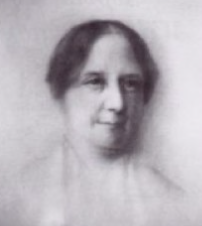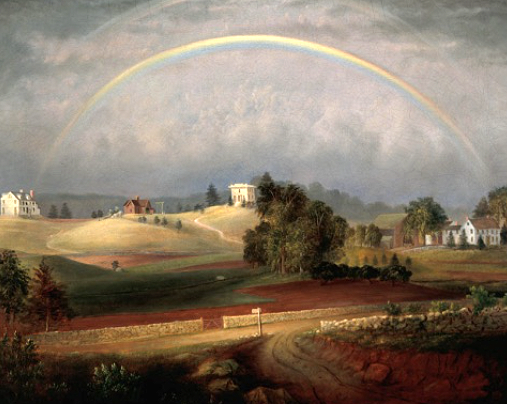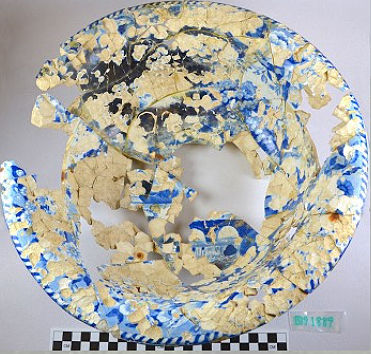A place of great natural beauty, combining a convenient nearness to the city with a degree of retirement and freedom from unfavorable influences unusual even in the country.
”The Experiment
The community that made this land famous, the Brook Farm Institute of Agriculture and Education, began in 1841. A Unitarian minister, George Ripley and his wife, Sofia, established an intentional experimental society based on balance and community partnership. Founded as a cooperative, it promised its participants a portion of the profits from the farm in exchange for contributing an equal share of the work. Fairly soon, Brook Farm was home to more than 30 members who attempted to work, learn, and live in harmony.
Revenue for the community came from harvests and goods produced on the farm, as well as through fees paid by the many visitors to the experimental community. Brook Farm developed into a campus, centered around a building called “The Hive”. However, even with all this infrastructure and membership growing to over 100 members, the society was struggling to stay self-sufficient. The experimental community would fail within six years.
George and Sophia Ripley were inspired by the ideas of Transcendentalism, which was the belief that the ideal society could be created on earth if it there was a balance between nature and community. By pooling labor, they believed they could sustain a community and still have time for literary and scientific pursuits. Each member could choose to do whatever work they found most appealing and all were paid equally regardless of gender.



Image courtesy of The Massachusetts Historical Society
The Eyrie, the square building on the hill, served as the Ripley’s home. The small wooden structure, The Margret Fuller Cottage, named after a frequent visitor of the farm, also served as a residence and a community gathering space. On the left, The Pilgrim House was a multi-use space that provided residential rooms, a laundry, a tailoring service, and even a ballroom. The Hive sits at the far right. They are surrounded by agricultural land, barns, a greenhouse, workshops, and outbuildings.
The 18th century farmhouse on the property was renamed the “Hive” and became the domestic center of the society. Archaeological excavations at the Hive have yielded many dining ware artifacts including utensils, plates, cups, and large serving vessels. A lack of dinnerware found anywhere else on the site suggest that the only dining facilities existed at the Hive.
Similarly, the music slate fragment below was found near the Eyrie, the only building noted to contain a music space and piano.


